#eLearning Gamification
Explore tagged Tumblr posts
Text
0 notes
Text
Khám phá các định dạng số hoá tốt nhất cho thiết kế bài giảng điện tử
Trong thời đại công nghệ số hiện nay, việc biểu đạt thông tin và kiến thức dưới dạng trực quan đóng vai trò quan trọng trong giáo dục và đào tạo. Một ví dụ điển hình là bài giảng điện tử, hỗ trợ việc học và giảng dạy một cách hiệu quả trong giáo dục hiện đại.
Tuy nhiên, để thiết kế bài giảng điện tử chất lượng và hiệu quả, doanh nghiệp cần lựa chọn định dạng số hoá phù hợp. Dưới đây là 7 định dạng số hóa tốt nhất cho thiết kế bài giảng điện tử:
Animation
Motion Graphics
Gamification
Slideshow
Video Stock
Quay hình giảng viên
Quay hình doanh nghiệp
Khám phá chi tiết tại đây: https://oes.vn/kham-pha-cac-dinh-dang-so-hoa-tot-nhat-cho-thiet-ke-bai-giang-dien-tu/
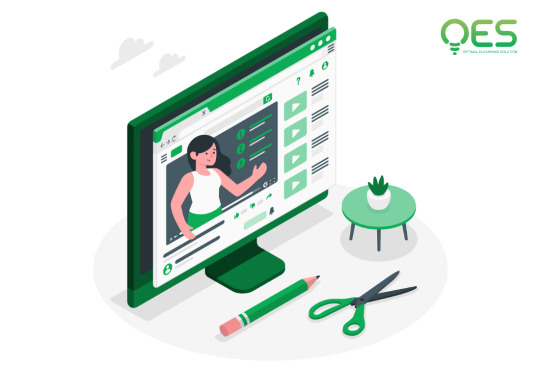
2 notes
·
View notes
Text
Revolutionizing Education in India: AI Coach LMS, Gamification, and eLearning Tools
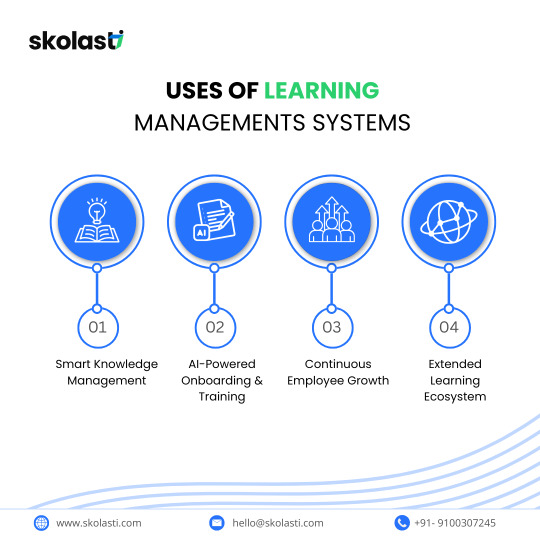
The Indian education and corporate training sectors are undergoing a digital transformation, fueled by innovations in technology. Among the most impactful developments are AI Coach LMS platforms in India, the increasing use of eLearning course creation software, and the growing popularity of LMS with gamification features. These tools are making learning more personalized, engaging, and results-driven.
AI Coach LMS Platforms in India: Smarter Learning for a Smarter Nation Artificial Intelligence is changing the way we learn. AI Coach LMS platforms in India are leading this transformation by offering smart, adaptive learning experiences. These platforms can analyze user behavior, recommend content based on learning pace and preferences, and even provide real-time feedback.
This level of personalization is especially valuable in India’s diverse learning environment, where students and professionals have different learning speeds, goals, and language needs. AI coaches help bridge these gaps by providing 24/7 assistance, performance tracking, and skill development insights.
LMS Platforms in India: A Rapidly Expanding Market India is one of the fastest-growing markets for digital learning. With increased internet access and smartphone usage, LMS platforms in India have become a vital part of educational institutions, coaching centers, and corporate training teams.
These platforms offer features such as mobile learning, live classes, content management, quizzes, certificates, and integration with third-party tools. Many Indian LMS providers now offer region-specific features like vernacular language support and low-data usage modes to reach rural learners.
eLearning Course Creation Software: Building Engaging Digital Content Creating quality learning content is now easier than ever with modern eLearning course creation software. These platforms empower educators, trainers, and subject matter experts to design visually appealing, interactive, and multimedia-rich content without needing advanced technical skills.
In India, this is helping businesses scale employee training programs and enabling teachers to deliver better remote education. The best course creation tools offer templates, animation features, assessments, and compatibility with SCORM or xAPI, making integration with LMS platforms seamless.
LMS with Gamification: Learning Through Play Traditional learning models can sometimes feel dry or repetitive, especially in digital formats. That’s why LMS with gamification is gaining popularity. By turning lessons into interactive experiences using points, badges, levels, and leaderboards, learners stay more motivated and focused.
Gamified LMS platforms are particularly effective in India’s K-12 education space and corporate learning sector. They promote healthy competition, increase course completion rates, and enhance long-term knowledge retention.
Gamification in LMS: A Strategic Advantage Implementing gamification in LMS isn’t just about fun — it’s a powerful strategy to drive learner engagement and performance. It encourages consistent participation, provides instant feedback, and makes progress visible.
In the Indian context, companies are using gamification to improve onboarding, customer service training, and soft skill development. Educational institutions are integrating it to keep students engaged in online classrooms and tutoring platforms.
Conclusion The combination of AI Coach LMS platforms in India advanced eLearning course creation software, and gamification in LMS is shaping the future of learning. These tools are helping learners across the country gain access to high-quality education, regardless of their location or background.
As India continues to embrace digital transformation, investing in smart LMS platforms and engaging learning content will be key to building a skilled and future-ready workforce.
#AI Coach LMS platforms in India#LMS platforms in India#eLearning course creation software#LMS with gamification#gamification in LMS#online learning software platforms#LMS for corporate training#learning management system#online learning management platforms
0 notes
Text
Gamification in E-Learning: Building Games that Teach
In recent years, the education landscape has undergone a dramatic transformation. With the rise of digital platforms and online learning, educators and developers alike are turning to gamification to make learning more engaging, effective, and fun.
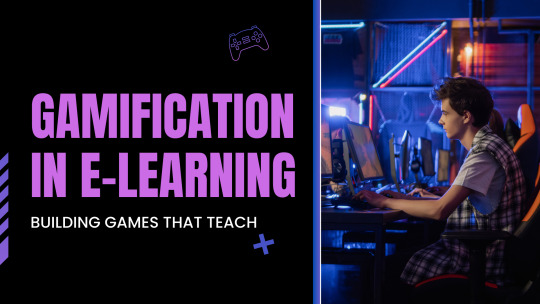
But what exactly is gamification, and how can we use it to build games that teach?
What is Gamification?
Gamification is the application of game design elements—like points, levels, achievements, and challenges—in non-game contexts. In e-learning, it involves integrating these mechanics into educational content to create a more immersive and motivating experience for learners.
Instead of passively absorbing information, learners become active participants, progressing through lessons as if they’re playing a game. This not only increases engagement but also improves knowledge retention, motivation, and overall performance.
Why Gamification Works in E-Learning
Here are some reasons why gamification is so powerful in educational settings:
1. Increased Engagement
Gamified learning makes lessons more interactive and enjoyable. When learners feel like they’re playing instead of studying, they’re more likely to stay focused and complete tasks.
2. Instant Feedback
Games provide immediate feedback, allowing learners to quickly understand what they did right (or wrong) and improve in real time.
3. Goal-Oriented Progress
Earning points, unlocking new levels, or achieving badges creates a sense of progress and accomplishment, encouraging students to continue learning.
4. Healthy Competition
Leaderboards and social sharing can introduce friendly competition, which motivates learners to perform better and stay involved.
5. Personalized Learning Paths
Games can adapt to each learner’s pace, strengths, and weaknesses—making education more personalized and effective.
Elements of a Good Educational Game
To successfully build a game that teaches, you need to strike a balance between entertainment and educational value. Here are some essential components:
Clear Learning Objectives: Know what you want users to learn.
Storytelling: A compelling narrative keeps users emotionally invested.
Interactive Challenges: Tasks that require problem-solving or creativity.
Rewards System: Points, badges, or certificates for motivation.
Progress Tracking: Visual indicators like progress bars or unlocked levels.
Adaptive Difficulty: Scale challenges based on the learner’s performance.
Examples of Gamification in Action
Duolingo teaches languages through points, streaks, and progress levels.
Kahoot! uses quizzes and competitive games in classrooms.
Prodigy turns math into a fantasy adventure for kids.
How to Get Started
If you’re an educator, developer, or content creator looking to integrate gamification into your e-learning platform, start small:
Add badges for course completion.
Introduce quizzes with time-based scoring.
Create mini-games to reinforce complex concepts.
As you scale, consider building entire modules or platforms that revolve around a game-based learning experience.
Let's Collaborate and Create!
Gamification has the power to change the way we learn—for good. Whether you're building an app, designing a course, or creating content, incorporating playful elements can unlock deeper engagement and better outcomes.
💬 What are your thoughts on gamified learning? Have you built or used educational games that made an impact?
👉 Please comment your ideas below—we’d love to hear your experiences, suggestions, and favorite tools!
https://www.linkedin.com/in/likita-g-369ba3221/
#Gamification#ELearning#GameBasedLearning#EdTech#EducationInnovation#LearningThroughPlay#DigitalLearning#EdTechSolutions#StudentEngagement#InteractiveLearning#OnlineEducation#FutureOfEducation#LearningIsFun#TechInEducation#InstructionalDesign#Microlearning#EdTechTrends#GamifiedLearning#LearningMotivation#@SMTLABS
0 notes
Text
0 notes
Text
Redefining Learning: The Game-Changing Approach of Learning Through Play
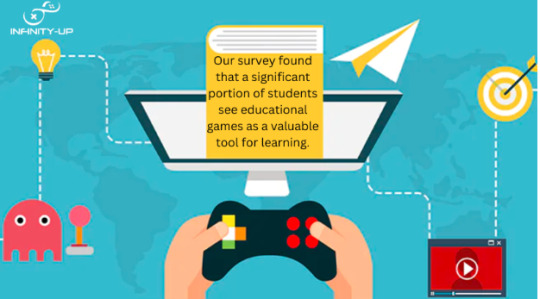
Games aren’t just for fun—they’re powerful educational tools! This article explores how game-based learning enhances engagement, boosts retention, and sharpens critical thinking. Let's look at how different game mechanics can be applied to various educational contexts and the benefits of incorporating play into traditional learning environments. Read the full article here: https://lnkd.in/d-HA2S84 Let's create engaging learning experiences together. Contact INFINITY-UP to get started!
#gamification#education#elearning#learning#edtech#artificial intelligence#traning#engagement#fintech#video games#gamedesign#marketing#gamedevelopers#browsergames#gamechanging#sales#Infinityup
0 notes
Photo

The Power of Microlearning: How Short Quizzes Improve Retention (on Wattpad) https://www.wattpad.com/story/389529791-the-power-of-microlearning-how-short-quizzes?utm_source=web&utm_medium=tumblr&utm_content=share_myworks&wp_uname=eduquestzone Traditional learning methods often involve long lectures and dense study materials, which can overwhelm learners and lead to low retention rates. Microlearning, which delivers content in small, digestible chunks, has emerged as a powerful way to boost knowledge retention. Short quizzes are one of the most effective microlearning tools, reinforcing learning through active recall. EduQuestZone, a gamified eLearning platform, takes microlearning to the next level by offering quiz-based learning with eduCoins, rewarding users for their engagement. This article explores how short quizzes enhance memory retention, improve engagement, and make learning more effective and enjoyable.
#education#educoins#eduquestzone#elearning#engagement#gamification#gamified#interactive#knowledge#learning#microlearning#online#quiz-based#quizzes#repetition#retention#rewards#spaced#student#n#books#wattpad#amwriting
0 notes
Text
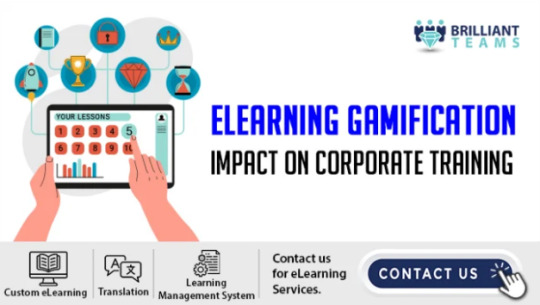
Elevate your corporate training with eLearning gamification! Boost motivation and retention by partnering with Brilliant Teams for innovative solutions.
0 notes
Text
🚀 Elevate your e-learning experience with the latest trends in Moodle theme development! From hyper-personalization and responsive design to enhanced accessibility and gamification, discover how cutting-edge themes are transforming online education. 📚✨
Explore how these innovations can create more engaging and inclusive learning environments. Whether you’re an educator or a developer, staying ahead of these trends is key to delivering a superior educational experience. 🌟
Read more about how to optimize your Moodle platform and unlock its full potential! - https://seorisinglms.wordpress.com/2024/07/30/innovating-online-learning-the-latest-in-moodle-theme-development/
#Moodle#LMS#EdTech#OnlineLearning#ThemeDevelopment#UXDesign#Accessibility#Elearning#Gamification#LearningAnalytics#Education#WebDesign#MobileLearning#Customization#EdTechTrends
0 notes
Text
#elearning#eLearning Gamification#business strategy#business#education#management#custom elearning development
0 notes
Text
E-Learning Company in India
As an eLearning company in India, it's crucial to recognize that in today's dynamic landscape, e-learning is transformative. It reshapes learning methods, transcends geographical constraints, and facilitates access to quality education globally. India, with its large population and growing internet connectivity, is increasingly pivotal in the e-learning industry's evolution.
What is E-Learning?
E-learning, or electronic learning, refers to using digital technologies to deliver educational content outside of a traditional classroom. It encompasses various formats, including online courses, webinars, virtual classrooms, and interactive tutorials.
Benefits of E-Learning
E-learning offers numerous advantages over traditional learning methods:
Flexibility: Learn at your own pace and schedule.
Accessibility: Access courses from anywhere in the world.
Cost-Effective: Reduces travel and material costs.
Personalized Learning: Tailor courses to individual needs.
Interactive Content: Engages learners with multimedia elements.
Types of E-Learning
There are several types of e-learning, each catering to different needs:
Asynchronous E-Learning: Learners access content at their convenience.
Synchronous E-Learning: Real-time, instructor-led sessions.
Blended Learning: Combines online and face-to-face learning.
Microlearning: Short, focused modules for quick learning.
Innovative E-Learning Solutions in India
1. Custom E-Learning Solutions
Many e-learning companies in India offer tailored solutions to meet the specific needs of their clients, providing customized content and interactive modules.
2. Learning Management Systems (LMS)
LMS platforms are integral to e-learning, allowing for the efficient management and delivery of online courses. Companies like Infonative Solutions provide robust LMS solutions.
3. Mobile Learning
With the proliferation of smartphones, mobile learning is becoming increasingly popular, offering learners the flexibility to access courses on the go.
4. Gamification in E-Learning
Gamification involves incorporating game elements into learning to enhance engagement and motivation. This approach is being widely adopted by Indian e-learning companies.
5. AR and VR in E-Learning
Augmented Reality (AR) and Virtual Reality (VR) transform e-learning by providing immersive and interactive learning experiences.
Conclusion
The eLearning company in India is reshaping education with adaptable, accessible, and affordable learning options. With advancing technology and expanding internet access, India's eLearning sector is set for substantial growth, fostering skill development and advancing national development.
#elearning company in India#learning management system#mobile learning#gamification#business growth#e learning
1 note
·
View note
Text
youtube
0 notes
Text
Transform Learning with the Best LMS Platforms in India | Skolasti
In today’s fast-paced digital world, LMS platforms in India are revolutionizing how we teach and learn. Whether you're an educator, coach, or business trainer, having the right online learning software platform can make a world of difference. At Skolasti, we bring you powerful tools that make eLearning engaging, effective, and fun.
Why Choose Skolasti?
Skolasti stands out as a top LMS with gamification features, helping learners stay motivated through points, badges, and leaderboards. Gamified elements transform traditional lessons into an engaging LMS game experience, enhancing participation and retention.
Course Creation Made Easy
Our platform features intuitive eLearning course creation software that enables educators to design professional, interactive content without requiring any technical skills. From quizzes to multimedia, course creation has never been easier.
Perfect LMS for Coaches and Educators
If you're a solo coach or run a training business, Skolasti is the ideal LMS for coaches. It offers customizable learning paths, progress tracking, and seamless communication with learners, making it a one-stop solution.
Conclusion
As one of the most user-friendly online learning software platforms, Skolasti empowers educators across India to deliver impactful, engaging learning experiences. Ready to level up your training programs? Explore Skolasti today — where learning meets innovation.
#LMS platforms in India#eLearning course creation software#LMS with gamification#online learning software platforms#LMS for corporate training#learning management system#online learning management platforms
0 notes
Text
E Learning Trends: Shaping the Future of Education

E learning trends
Technological improvements and changing learner expectations have transformed education. Once a supplement, e-learning is now a primary education method for many. Several schooling trends are emerging from this shift. This article discusses these trends’ effects and possibilities.
E-learning trends 2024 Personalized Education Personalization adapts education to individual needs, interests, and talents. E-learning platforms may customize material and learning paths using data analytics and AI. For instance, adaptive learning systems monitor student performance and adjust material and difficulty.
Benefits: Relevance to interests and understanding keeps students interested. Results: Personalised learning helps detect and address learning gaps, improving academic achievement. Challenges:
Privacy: Personal data presents security and privacy concerns. Development and maintenance of adaptive learning systems are expensive and time-consuming. Microlearning Microlearning delivers little, digestible pieces of material. This trend enables professionals and adult learners fit learning into their busy schedules. Microlearning courses usually include 10-15 minute films, quizzes, and interactive exercises.
Benefits: It’s easier to balance studying with other responsibilities when learners may access content at their convenience. Information retention and cognitive overload are improved by short, targeted learning sessions. Challenges:
For complicated subjects that require in-depth study, microlearning may not be suitable. Integration: Aligning microlearning modules with learning goals is difficult. Gamification Gamification makes learning fun by adding game design features. Leaderboards, badges, and points are examples. Achievement and competitiveness drive students.
Benefits: Gamification motivates students by appealing to their inherent desire for success and competition. Increased Engagement: Fun and interactive learning can boost participation. Challenges: Rewards Overemphasis: Students may choose rewards over learning. Implementation complexity: Effective gamified experiences involve preparation and design skills. Mobile learning
Mobile learning (m-learning) has grown with smartphones and tablets. M-learning makes learning easier by letting students access content anytime, anyplace.
Benefits: Quality education is available to remote and underserved students via mobile devices. Flexible: Learners can study during commutes or breaks. Challenges: Device Limitations: Mobile devices’ small screens and processing power can hamper learning. Connectivity: M-learning requires reliable internet access, which can be difficult in some areas. Virtual Reality (VR) and Augmented Reality (AR) E-learning is becoming more immersive and engaging with Virtual Reality(VR) and Augmented Reality (AR). VR can simulate medical and engineering, while AR can overlay digital information on the real environment to improve learning.
Benefits: Virtual and augmented reality enhance learning by providing hands-on experience and practical application. Engagement: These technologies generate student interest through interactive learning. Challenges: Excellent VR and AR equipment and content development are costly. Technological Challenges: These technologies require strong technological infrastructure and knowledge. Social learning Social learning enhances education through social contact. Online discussion forums, social media, and collaborative projects help students learn, share, and think critically.
Benefits:
Collaboration: Promotes student teamwork and learning. Peer interactions promote critical thinking and problem-solving in social learning situations. Challenges: Facilitating productive and courteous conversations involves moderation. If misused for teaching, social media can be distracting. Artificial Intelligence(AI) Autonomous administrative duties, intelligent tutoring, and personalised learning are revolutionising e-learning with Artificial Intelligence. Artificial Intelligence can analyse big data to reveal student performance and learning habits.
Benefits: Efficiency: Grading and administrative activities can be automated by Artificial Intelligence, letting teachers focus on teaching. AI-driven analytics can personalise learning for each student. Challenges: Data privacy and algorithmic prejudice are ethical concerns with Artificial Intelligence. Dependency: Artificial Intelligence overuse can lessen human educators’ role. Blended Learning Blended learning mixes online and face-to-face training. This method offers flexibility and direct teacher-student connection.
Benefits: Students can learn in-person or online, allowing different learning styles. By mixing teaching approaches, blended learning offers a more complete education. Challenges: Effective blended learning programmes require careful design and resource allocation. Making sure all pupils have the right tech can be difficult. Lifetime Learning Lifelong learning emphasizes on-going education and skill development. A variety of e-learning courses lets people master new skills or upgrade old ones at their own speed.
Benefits: Career advancement: Learning new skills through lifelong learning keeps people competitive. Lifelong Learning: Learning enhances personal and intellectual growth. Challenges: High motivation and discipline are needed for self-directed learning. Quality Assurance: Online course credibility is tough to ensure. E learning trends for the future As technology and learner demands change, e-learning is altering education. Personalised learning, microlearning, gamification, mobile learning, VR and AR, social learning, AI, blended learning, and lifelong learning are making education more accessible, engaging, and effective. To reach their full potential, these trends must overcome obstacles. E-learning will increasingly play a significant role in offering quality education to learners globally, adjusting to their requirements and preparing them for the future.
Read more on Govindhtech.com
#ELearningTrends#ELearning#AugmentedReality#VirtualReality#Gamification#Microlearning#PersonalizedEducation#technology#technews#news#govindhtech
0 notes